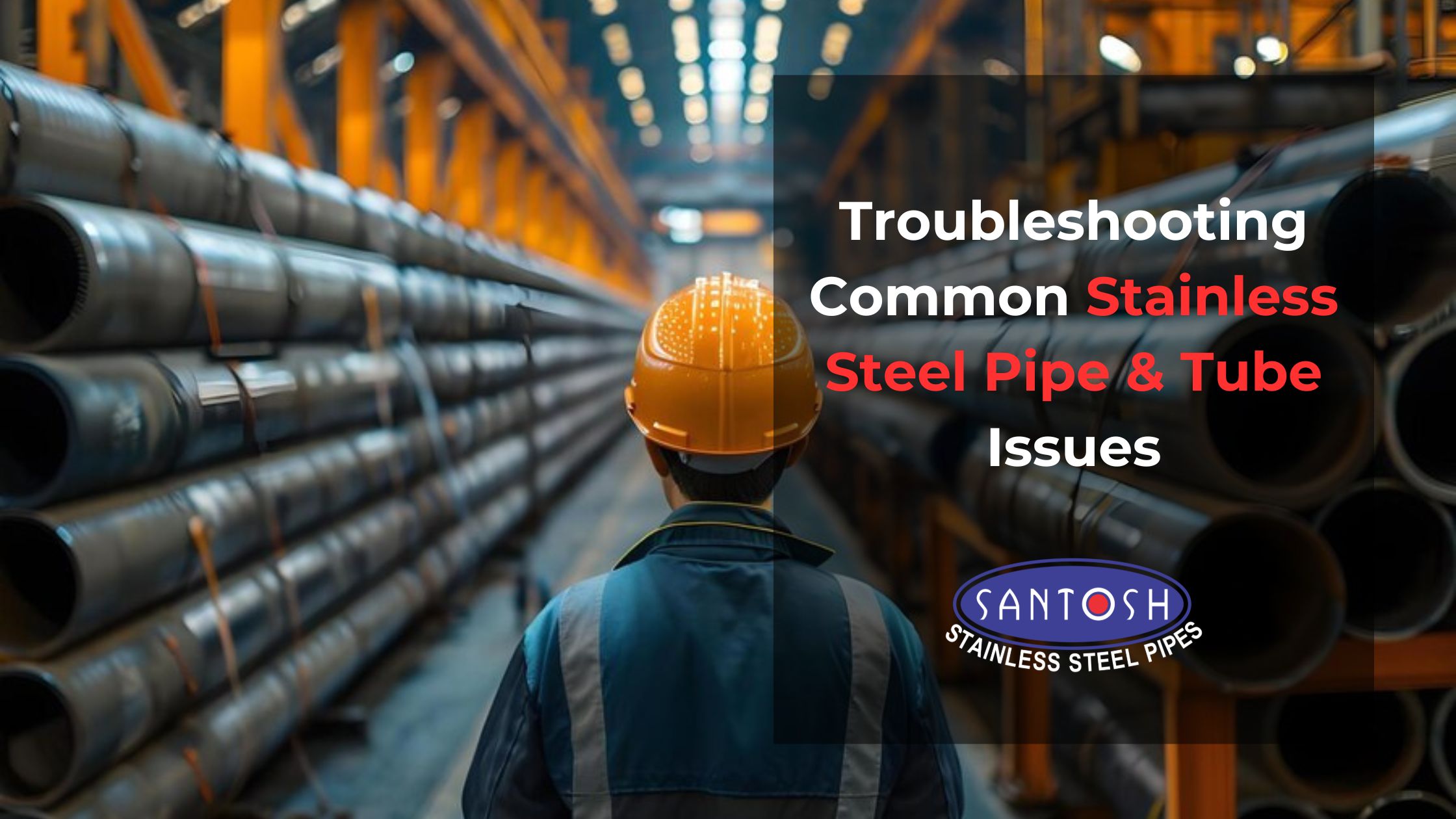
Stainless steel pipes and tubes are widely used in many industries due to their strength and resistance to corrosion. However, like any material, they can face issues that require troubleshooting. In this blog, we'll talk about common issues and how to prevent them.
Common Issues with Stainless Steel Pipes & Tubes
Corrosion
Even though stainless steel is known for not rusting, it can still corrode under certain conditions. Corrosion can happen if the pipes are exposed to harsh chemicals or if they are not cleaned regularly.
Leaks
Leaks in stainless steel pipes and tubes can occur due to improper installation, damage, or wear and tear over time. Leaks can lead to significant problems if not fixed quickly.
Blockages
Blockages can occur due to the buildup of dirt, debris, or other materials inside the pipes. This can reduce the flow of liquids or gases and affect the efficiency of the system.
Cracking
Cracking can happen if the pipes are exposed to extreme temperatures or pressures. It can also occur if there are flaws in the material or if the pipes are not installed correctly.
How to Prevent Corrosion and Damage in Stainless Steel Pipes & Tubes
Regular Inspections for Corrosion
Check your stainless steel pipes and tubes regularly for signs of rust or damage. Look for discoloration, rust spots, or small holes. Finding problems early can help you fix them before they get worse.
Effective Cleaning Techniques for Longevity
Keep your pipes and tubes clean. Use mild soap and water to wash away dirt and grime. Don't use harsh chemicals or abrasive scrubbers, as they can scratch the surface and make it easier for rust to form.
Protective Coatings to Resist Corrosion
Consider applying a protective coating to your pipes and tubes. These coatings can help keep moisture and chemicals away from the metal, reducing the chance of rust.
Monitoring Temperature and Pressure Levels
Make sure your pipes and tubes are not exposed to extreme temperatures or pressures. High heat and pressure can cause the metal to weaken and crack. Use gauges to monitor these levels and make adjustments as needed.
Proper Installation Practices for Durability
Ensure your pipes and tubes are installed correctly. Use proper welding techniques and high-quality fittings to prevent leaks and cracks. Proper installation can make your pipes last longer and work better.
Additional Maintenance Tips
Seasonal Maintenance Checks
Perform seasonal checks on your stainless steel pipes and tubes. Different weather conditions can affect the metal. In winter, for example, pipes might contract, which could lead to leaks. Regular seasonal checks can help identify and fix issues early.
Using the Right Cleaning Products
Always use cleaning products that are suitable for stainless steel. Products that are too harsh can damage the surface of the pipes and tubes, making them more prone to corrosion. Look for cleaners that are specifically designed for stainless steel to ensure they are gentle yet effective.
Addressing Minor Issues Quickly
If you notice any minor issues, such as small leaks or tiny rust spots, address them immediately. Small problems can quickly become big ones if they are not dealt with promptly. Quick repairs can save you a lot of time and money in the long run.
Conclusion
Taking care of stainless steel pipes and tubes is important to keep them working well. By checking for corrosion, keeping them clean, using protective coatings, monitoring temperature and pressure, and ensuring proper installation, you can prevent many common problems. Regular maintenance checks and using the right cleaning products can also extend the life of your pipes and tubes.
For top-quality stainless steel pipes and tubes, contact Santosh Steel. We offer a wide range of stainless steel tubes and pipes to meet your needs. Visit our website to learn more, and get in touch with us today.
Frequently Asked Questions (FAQs)
What are the main causes of corrosion in stainless steel pipes and tubes?
Corrosion in stainless steel pipes and tubes can be caused by exposure to harsh chemicals, saltwater, or high humidity. Regular cleaning and protective coatings can help prevent corrosion.
How often should I inspect my stainless steel pipes and tubes?
It's recommended to inspect your stainless steel pipes and tubes every six months. Regular inspections help catch problems early, making them easier and cheaper to fix.
Can I use any cleaner on stainless steel pipes and tubes?
No, you should use cleaners specifically designed for stainless steel. Harsh cleaners can scratch the surface and lead to corrosion.
What should I do if I find a leak in my stainless steel pipe or tube?
If you find a leak, you should repair it immediately. Small leaks can become big problems if not fixed quickly. Contact a professional if you're unsure how to fix it.
What are the signs of blockages in stainless steel pipes and tubes?
Signs of blockages include reduced flow of liquids or gases, unusual noises, and increased pressure in the system. Regular cleaning and maintenance can help prevent blockages.
How can I prevent cracking in stainless steel pipes and tubes?
To prevent cracking, avoid exposing your pipes and tubes to extreme temperatures or pressures. Ensure the proper installation and use of high-quality materials and fittings.